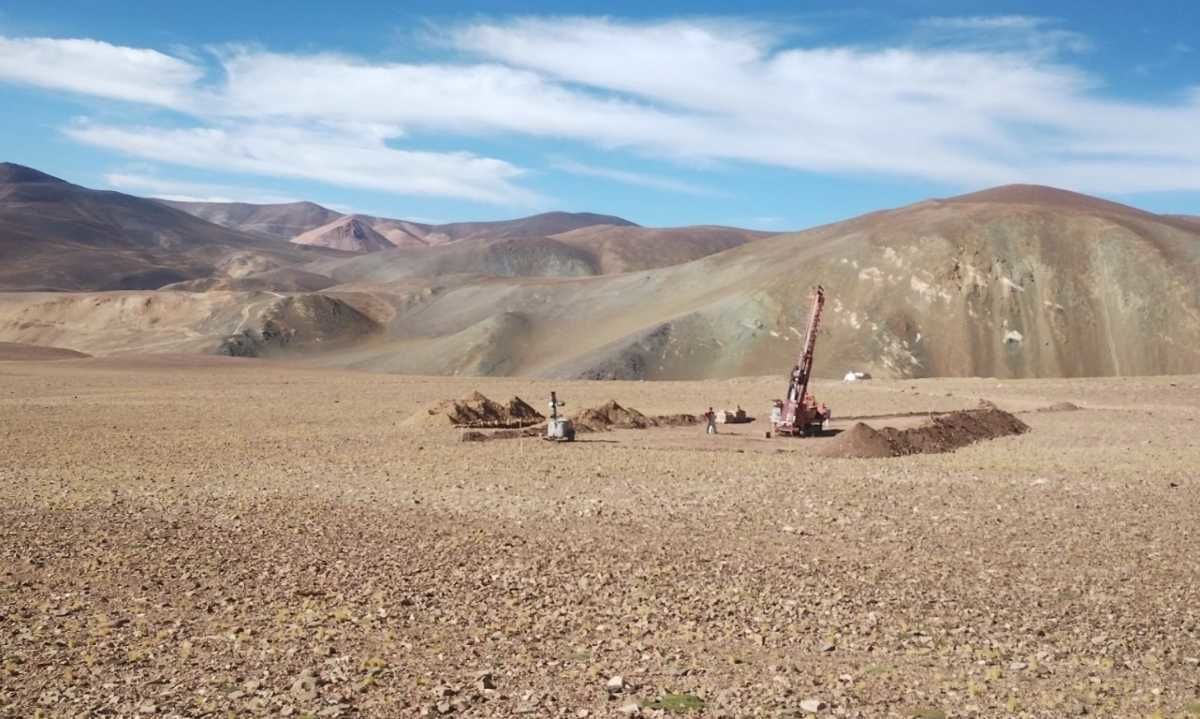
The Peñas Negras Project has similar geological characteristics to other deposits in the Vicuña Belt and a cluster of porphyry and epithermal targets have been identified on the project.
Sendero Resources Corp. has announced to provide an update on its current 4,500m maiden drill campaign at its 100% owned Peñas Negras Project in the Vicuña District, La Rioja, Argentina.
Three diamond drillholes have been completed for a total of 1,544m across three priority targets at La Peña, Tamberías and La Ollita with assay results pending.
Sendero Executive Chairman, Michael Wood, commented:
“We are pleased with the visual results of the current drilling program at Peñas Negras. All three holes completed to date into three priority targets (La Ollita, La Peña and Tamberías) have intersected porphyry Cu-Au mineralization. Drilling has also confirmed that La Ollita is a composite porphyry-epithermal system with an extensive advanced argillic lithocap overlying a mineralized porphyry, like the major deposits in the Vicuña District. For this reason, La Ollita has advanced to the highest priority target for Sendero.”
Drilling Update
- Hole PND 001: 575m at La Peña: Intersected an elongated diorite porphyry body with pervasive potassic alteration, characterized by quartz-biotite-magnetite-K-feldspar; with partial overprinting of quartz-sericite and chlorite. Intense porphyry-style stockwork veining was intersected including magnetite veinlets (M-type), A and B-type quartz, and anhydrite/gypsum veins. Hydrothermal and possible phreatomagmatic breccias cut the porphyry intrusive bodies. Widespread disseminated pyrite with traces of chalcopyrite and molybdenite were encountered throughout the hole. Towards the bottom of the hole intrusion-type brecciation occurs at the contact between the intrusive porphyry and the granitic country rock.
- Hole PND 002: 519m at Tamberías: The drill hole intersected small multiphase dacite to diorite porphyry intrusives with breccia phases that were emplaced into andesitic to dacitic volcanic country rock. The overall alteration is chlorite-illite-sericite overprinted on early potassic alteration (biotite-magnetite). Fine quartz-magnetite veinlets and stockwork veining of gray quartz are recognized throughout the entire hole, sometimes accompanied by sulfides. Abundant disseminated pyrite, with traces of chalcopyrite and molybdenite, are present throughout the hole.
- Hole PND 003: 450m at La Ollita: Intersected an advanced argillic lithocap in the upper 150m of the hole associated with intensely silicified polymictic (phreatomagmatic) breccia. The alteration is typical of high-sulfidation epithermal gold-copper mineralization, characterized by quartz-kaolinite-sericite-pyrophyllite, with zones of vuggy silica. Disseminated and fracture-controlled pyrite is the dominant sulfide with minor chalcopyrite and chalcocite. Sulfide filled fracture zones contain chalcopyrite-chalcocite and traces of covellite and enargite together with pyrite, galena, sphalerite and possible Ag-As-Sb sulfosalts. Deeper in the hole, the lithology is predominantly volcanic (andesite and dacite), and alteration gradually shifts towards an assemblage of chlorite-illite-sericite-kaolinite with patchy silica and gray quartz stockwork veining with minor quartz-chalcopyrite veinlets. The lower part of the hole contains abundant disseminated pyrite, with traces of chalcopyrite and chalcocite.
.jpg)
La Ollita - Geophysics
Ground magnetics and induced polarization (IP) surveys recently completed at La Ollita have enhanced our technical understanding of this target. The ground magnetics has produced three discrete magnetic high anomalies spread in an east to west orientation across the prospect for approximately 2km (Figure 2).
The pole-dipole IP lines show a large chargeability anomaly coinciding with the central ground magnetic high (Figure 3). This coincident positive magnetic and IP response together with results of ionic leach geochemistry is the focus of the current drilling at La Ollita.
La Ollita is a mineralized system where the company knows there is significant metal content from historic drill results. In the period 1995 – 1997 over 9,000m of mostly RC drilling was carried out by Eldorado who identified both a dacite and diorite porphyry below a shallower epithermal cap. The highest gold assay returned was 20.583 g/t Au (Hole PNR028 from 130m to 132m), and the highest copper assay returned a value of 0.6027% Cu (Hole PNR036 from 108m to 110m). The historical drilling was mainly shallow drilling with an average depth of 127m and many holes stopped in Au-Cu mineralization.
The association of high-level breccia bodies in PND003 showing clasts of mineralized porphyry plus the clear evidence of classic vuggy residual quartz and silica-clay (advanced argillic alteration) overlying porphyry style mineralization is strong evidence of telescoped alteration and mineralization zoning. Similar features are shared with the contemporaneous porphyry gold copper deposit of the Vicuña District, particularly Filo del Sol and Josemaria.
(14).jpg)
(10).jpg)
Next Steps
At La Ollita, drilling is currently underway around 250m deep into PND004. Information on the locations of further drillholes will be provided once initial assay results are received and further geophysical data is fully interpreted from La Peña and Cerro Verde South.




